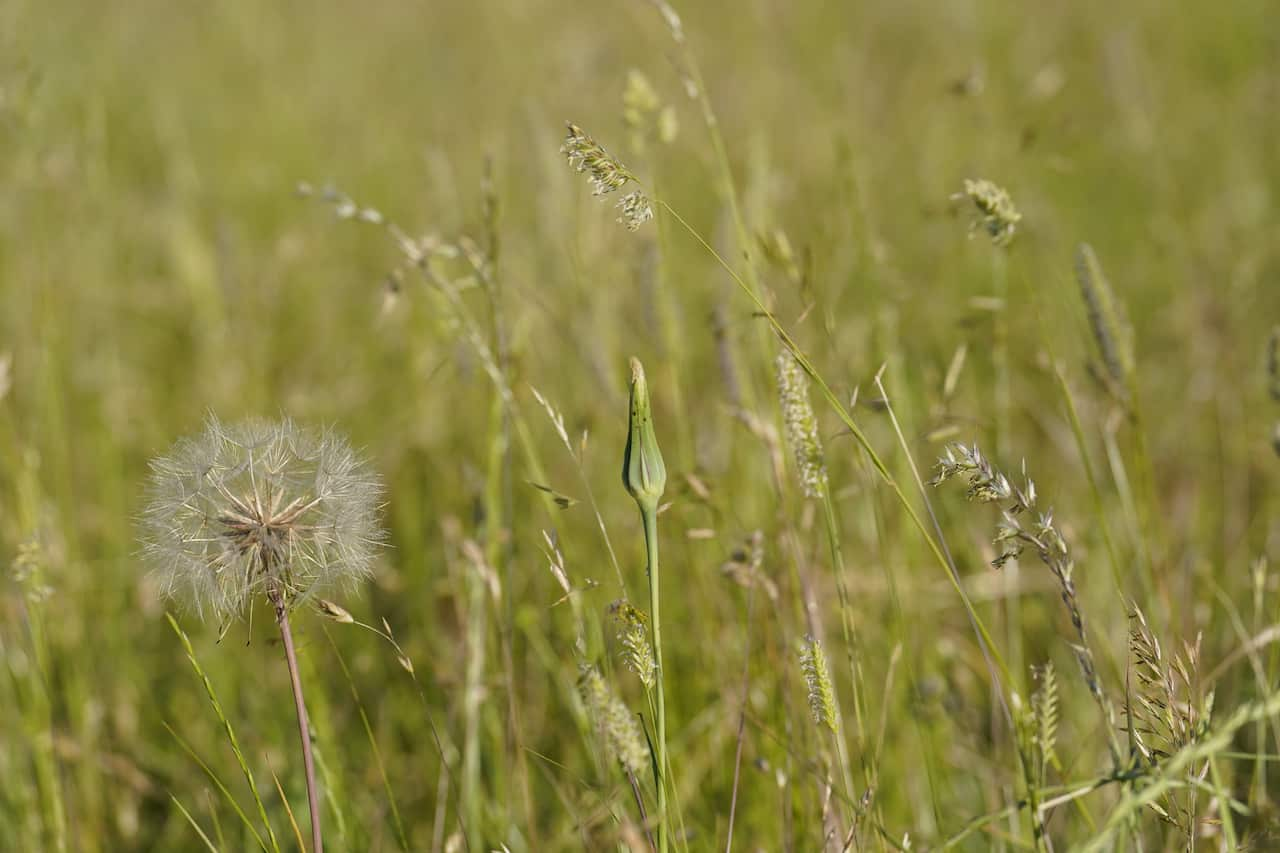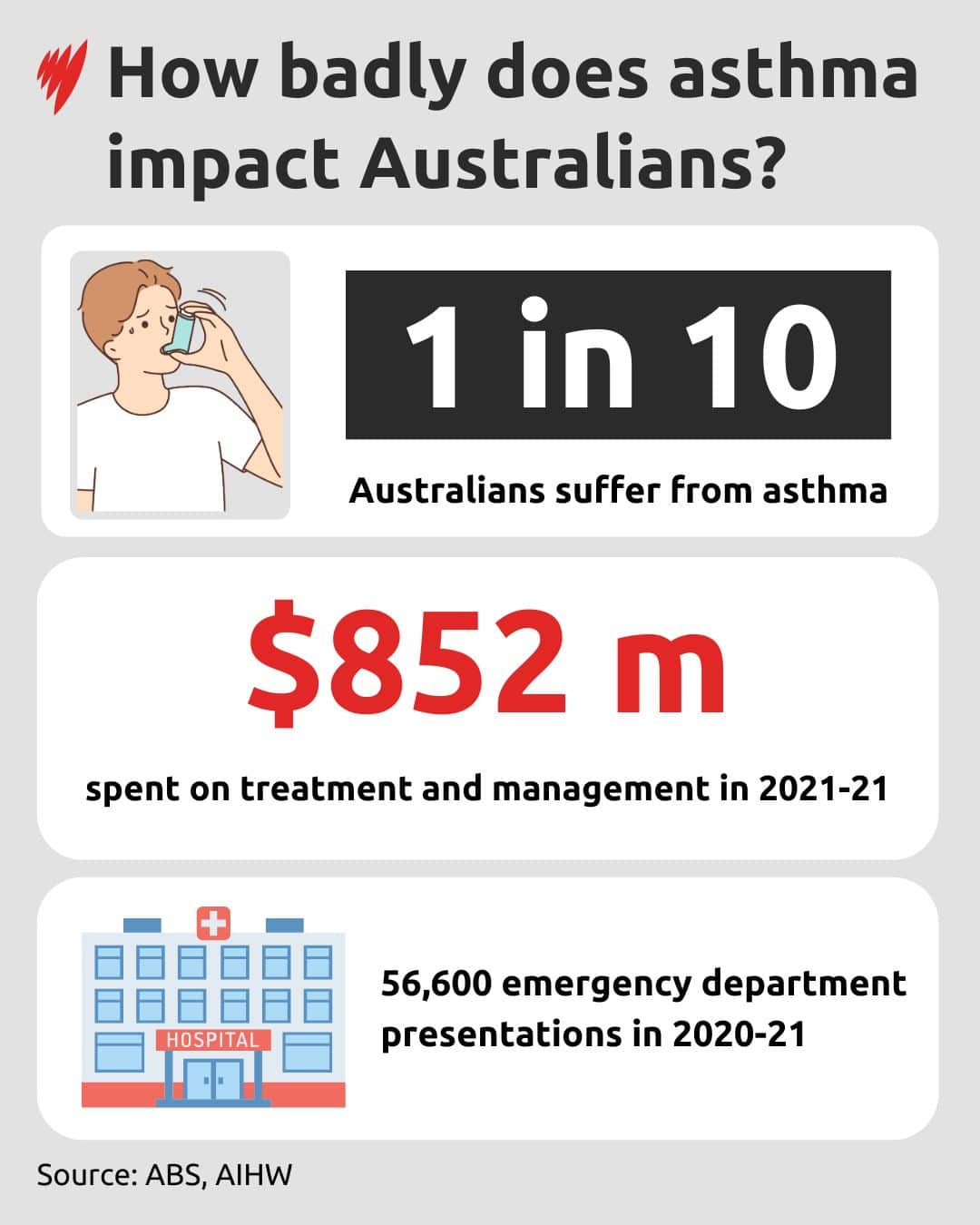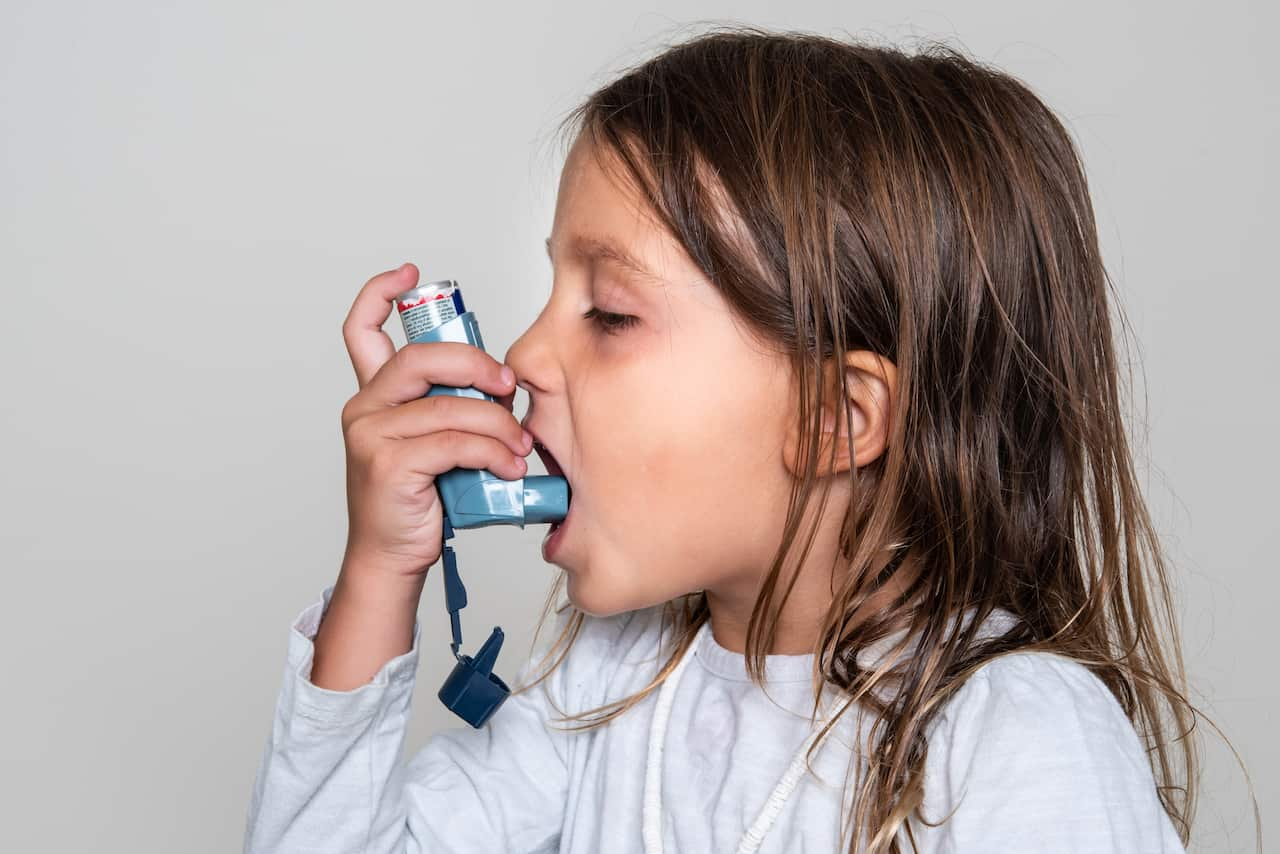It is peak itchy throat, sneezing and runny nose season in Australia right now.
Spring is when hay fever (also known as allergic rhinitis) usually arrives and according to the Australian Bureau of Statistics (ABS), 23.9 per cent, or almost one in four, Australians experience the discomforts associated with it.
The condition is often exacerbated by pollen in the air, but Australia, unlike some other developed countries, does not have a national pollen monitoring service.
Concerns about pollen levels
Pollen not only triggers hay fever but asthma too, which affects about one in 10 Australians.
Data from the ABS shows that 2.8 million people in Australia had asthma in 2022.
Melbourne experienced the , which resulted in 10 deaths.
The National Asthma Council has alerted Victorians to a challenging grass pollen season with predictions indicating there will again be high pollen levels similar to those in 2023, posing significant risks for people with hay fever and asthma.
People in Queensland with asthma and hay fever were warned this week to take precautions because high temperatures along with possible severe thunderstorms increases the risk of high pollen counts.
National Asthma Council Australia director Peter Wark said: “When you’ve had lots of grass out in the meadows and a thunderstorm happens, you’ve got these sudden atmospheric changes that blow the wind, which is often dry, and lifts up the pollen into the air.”
“It then leads the hot, wet air, which is high in the atmosphere, and then a thunderstorm suddenly happens and it dumps all of that pollen and rainwater in a whoosh of air out onto the ground.
“And if you just happen to land on a large city full of people, suddenly, you’ve got a huge exposure to grass; and people who are sensitised to it and have a marked worsening of their symptoms very, very quickly.”
Pollen monitoring
Senior research clinical fellow at the University of Melbourne, Edwin Lampugnani, said hay fever not only affects sufferers but also has an economic impact.
“There are studies out there that point to billions of dollars in lost business revenue because of people taking days off work because of hay fever alone,” he said.
Lampugnani is also the chief operating and chief science officer at Air Health, which provides pollen monitoring and forecasting services for a number of Australian cities.
Pollen in the air can cause debilitating hay fever symptoms during spring. Source: Getty / Andrew Matthews – PA Images
Several Australian universities formed the startup company with the aim of providing improved information to the community.
Lampugnani said such monitoring had been missing on a national level.
“The Bureau of Meteorology (BoM) won’t do it because it’s not weather, it’s not the sun, it’s not the rain. The EPA (Environment Protection Authority) generally concentrates on pollutants, gasses, particle matter, but not biologicals,” he said.
“So pollen is a very interesting one, because it sort of sits at the nexus between a lot of agencies, or agencies have an interest in it, but it’s not really quite in their mandate just yet.”
He said through collaborations with universities, Air Health was providing pollen forecasts via apps for all capital cities other than Adelaide and Brisbane.
However, Lampugnani said only short-range forecasts were available for free, with fees charged for longer-range forecasts to fund a part of the service.
SBS News asked the federal Health Department about the lack of a national pollen monitoring system but didn’t receive a reply.
The BoM said it was: “not the appropriate organisation to speak on pollen”.
But a BoM spokesperson told SBS News that thunderstorm asthma can be triggered by thunderstorms in southern Australia from October to December when pollen levels are the highest.
The spokesperson said the BoM doesn’t issue thunderstorm asthma warnings.
In the United Kingdom, the pollen count monitoring network combines Met Office weather data with expertise from organisations such as the National Pollen and Aerobiological Unit to produce pollen forecasts for five days ahead across the whole of the UK.
France and Switzerland have state-owned pollen monitoring networks that provide daily and even hourly updates on the aerial pollen count to allergy sufferers.
Collecting data and forecasting
Lampugnani said automated pollen counters, which cost more than $150,000 each, currently operate in Perth and Melbourne.
In other places in Australia where pollen monitoring is carried out, it is done with what he calls manual machines.
“They require a person to go up onto a roof, put in a microscope slide, and then 24 hours later, go up and get that microscope slide, bring it down to a microscope, put some stain on it, and then count the number of pollen grains on that slide for one to 1000 or 10,000 or whatever the number might be, and do that for every single type of pollen,” he said.
In order to forecast pollen levels in a location, pollen in the air must be monitored. Source: Getty / Houston Chronicle/Hearst Newspap
This time-consuming process means the focus is generally on the most common types of pollen such as grass pollen.
The pollen count is considered alongside historical data on the same and specific location conditions to create pollen forecasts.
“One of the things that we always come up against is there’s a lot of companies out there that do provide pollen forecast information, or supposedly do, but nobody in Australia monitors what’s actually in the air. They’ve taken models that were developed in the US or Europe and just plonked them here,” Lampugnani said.
He said one service provided a forecast for ragweed pollen in Victoria, despite there not being any ragweed in that state.
Prevention and cure
National Asthma Council Australia director Peter Wark said pollen warnings could help sufferers.
“On very high pollen days, [those who have hay fever] they might experience more symptoms, and it’s possibly helpful to be aware of that, so it might lead to some modification in their behaviours such as they won’t go outside to exercise if they notice that there’s a very high pollen count or not spend a lot of time outdoors,” he said.
Australia is home to 2.8 million asthma sufferers including young children. Credit: Juanmonino/Getty Images
He added hay fever symptoms could be “pretty debilitating” and may also increase a person’s risk of getting infections such as sinusitis.
Wark said that given the reality of life meant people could not always stay indoors, it’s important that those who do get hay fever start using a steroid nasal spray at the beginning of spring and into the summer too and then an over-the-counter antihistamine for any breakthrough symptoms.
The council says hay fever can make asthma harder to control.
Wark said it was important for anyone who has asthma, even if it appeared to come and go, to manage it with a preventer, as relying on “a blue reliever puffer alone is not adequate and is dangerous”.




